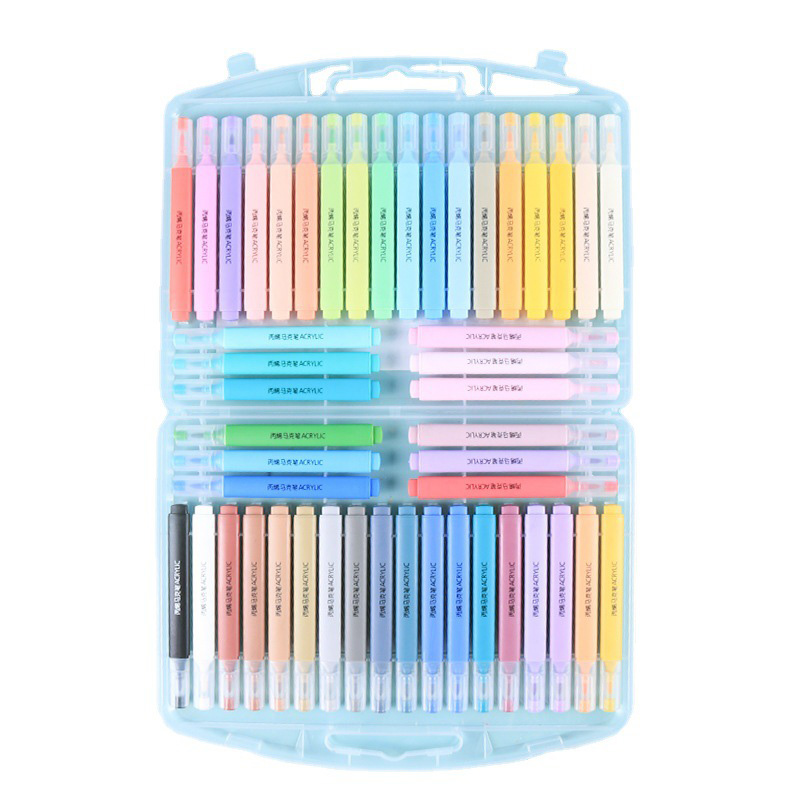As the world of art tools continues to evolve, watercolor pens are emerging as a powerful hybrid medium that blends the fluidity of watercolor paints with the precision and convenience of a pen. With growing demand from hobbyists, illustrators, designers, and educators, watercolor pens are transforming the landscape of creative expression—offering portability, control, and versatility that appeal to both beginners and professionals alike.
Bridging the Gap Between Paint and Pen
Unlike traditional watercolors that require brushes, palettes, and water cups, watercolor pens are self-contained, mess-free tools. Each pen is filled with water-based pigment ink that mimics the translucent, blendable quality of watercolor paint. A brush-style nib—usually soft, flexible, and tapered—allows artists to create both fine lines and broad washes with ease.
This blend of convenience and expressive potential makes watercolor pens especially attractive to modern creatives who need a mobile, adaptable tool. From sketching in cafés to plein air painting in nature, users can enjoy the spontaneity of watercolor without the logistical hurdles of conventional materials.
Expanding User Base: From Classrooms to Studios
The accessibility of watercolor pens has contributed to their widespread adoption across multiple sectors. In education, art teachers use them to introduce students to watercolor techniques without the mess, space, or cleanup requirements of traditional setups. Their ease of use empowers younger students to experiment with blending, shading, and layering while learning about color theory and brush control.
For designers and illustrators, watercolor pens offer a fast, intuitive way to add color and texture to concept sketches, fashion drawings, storyboards, and product designs. Many professionals integrate them into their workflows alongside digital tools, scanning pen work into programs like Photoshop or Illustrator for enhancement and refinement.
In the DIY and craft community, watercolor pens are especially popular in calligraphy, journaling, and card making. The ability to create elegant brush lettering and vivid color gradients makes them ideal for custom projects and gifts. Social media platforms like TikTok and Instagram are filled with tutorials and time-lapse videos showcasing their versatility—driving demand among hobbyists and aspiring artists.

Technological Advances and Product Innovation
Manufacturers are continually refining ink formulation and tip construction to improve watercolor pen performance. Today’s pens often feature highly pigmented, water-soluble dyes that blend easily without streaking or feathering. Some lines are even lightfast, meaning they resist fading over time, a feature previously in dye-based products.
Tip designs have also advanced significantly. High-quality brush tips now closely replicate the behavior of real paintbrushes, bouncing back into shape after pressure and offering consistent ink flow across paper textures. Dual-tip models, featuring a brush on one end and a fine liner on the other, provide added flexibility for both detail work and expressive strokes.
To support artistic control, many manufacturers now offer water blender pens, which contain clear liquid for blending and diluting colors directly on the paper. This eliminates the need for additional brushes or water cups, streamlining the creative process even further.
Eco-Conscious Production and Reusability
As with other stationery categories, sustainability is becoming a major concern among watercolor pen users. brands are responding by introducing refillable pen barrels and replaceable nibs, reducing the need for single-use plastic pens. Some companies now produce pens with recyclable packaging and non-toxic, environmentally friendly ink formulations.
Art supply buyers—especially schools, universities, and creative studios—are starting to prioritize products with lower environmental impact. As a result, brands that emphasize sustainable practices are gaining a competitive edge, especially among Gen Z and Millennial consumers who are more environmentally conscious.
Customization and Product Line Diversification
To appeal to a growing and diverse customer base, manufacturers are expanding their watercolor pen offerings. Starter kits, themed color palettes, and professional-grade sets are now widely available. Brands often curate collections based on mood (e.g., warm tones, pastel hues), subject matter (e.g., botanical, portrait), or artistic purpose (e.g., calligraphy, landscape).
Some companies offer personalization services, allowing artists to build their own color sets or purchase limited-edition collections. This element of customization enhances brand loyalty and encourages users to see watercolor pens not just as tools, but as creative companions.